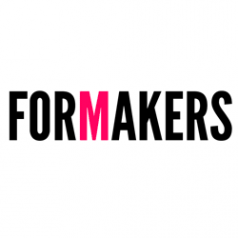20AUG 2012
 © Beginning in the 1990′s, architects have used digital software to imbue structures and spaces with some of the same qualities as Da Vinci’s meticulous drawings: fluidity, undulation, instability and temporality. But while software has allowed architects to create novel, dynamic forms digitally, they have struggled to translate these qualities to the physicality of the material world.
© Beginning in the 1990′s, architects have used digital software to imbue structures and spaces with some of the same qualities as Da Vinci’s meticulous drawings: fluidity, undulation, instability and temporality. But while software has allowed architects to create novel, dynamic forms digitally, they have struggled to translate these qualities to the physicality of the material world.
 © Slipstream is a physical structure that confronts that leap directly, translating a 2-dimensional digital line drawing into 3-dimensional space.
© Slipstream is a physical structure that confronts that leap directly, translating a 2-dimensional digital line drawing into 3-dimensional space.
 © Alluding to Lebbeus Woods’ 2010 ‘Slipstreaming’ drawings of flow, the installation at the Bridge Gallery in New York is a single drawing extruded through the gallery space and cut away to produce a set of interconnected spaces.
© Alluding to Lebbeus Woods’ 2010 ‘Slipstreaming’ drawings of flow, the installation at the Bridge Gallery in New York is a single drawing extruded through the gallery space and cut away to produce a set of interconnected spaces.
 © The linear extrusion acts as both structure and dynamic visual filter, shifting views through the installation and between the spaces it defines. It’s integrity as a structure is masked by both its redundancy and bright coloration.
© The linear extrusion acts as both structure and dynamic visual filter, shifting views through the installation and between the spaces it defines. It’s integrity as a structure is masked by both its redundancy and bright coloration.
 © Employing gradients that diffuse and coalesce along its length, color amplifies the undulating lines, establishing cross currents that intensify as visual eddies.
© Employing gradients that diffuse and coalesce along its length, color amplifies the undulating lines, establishing cross currents that intensify as visual eddies.
 © Irreducible to form, structure, or graphic, Slipstream is a combined phenomenon of the three..
© Irreducible to form, structure, or graphic, Slipstream is a combined phenomenon of the three..
 ©
©
 ©
©
 ©
©
 ©
©
 ©
©
 ©
©
 ©
©
 ©
©
Slipstream / FreelandBuck
Posted in Architecture - Installation by * FORMAKERS
At least since Leonardo Da Vinci’s first attempts to describe turbulence, architects have been fascinated by the dynamics of flow – perhaps seeking an escape from the solid, stable nature of buildings. ©
©  ©
©  ©
©  ©
©  ©
©  ©
©  ©
©  ©
©
 ©
©
 ©
©
 ©
©
 ©
©
 ©
©
 ©
©
Comments
No comments
Sign in »




